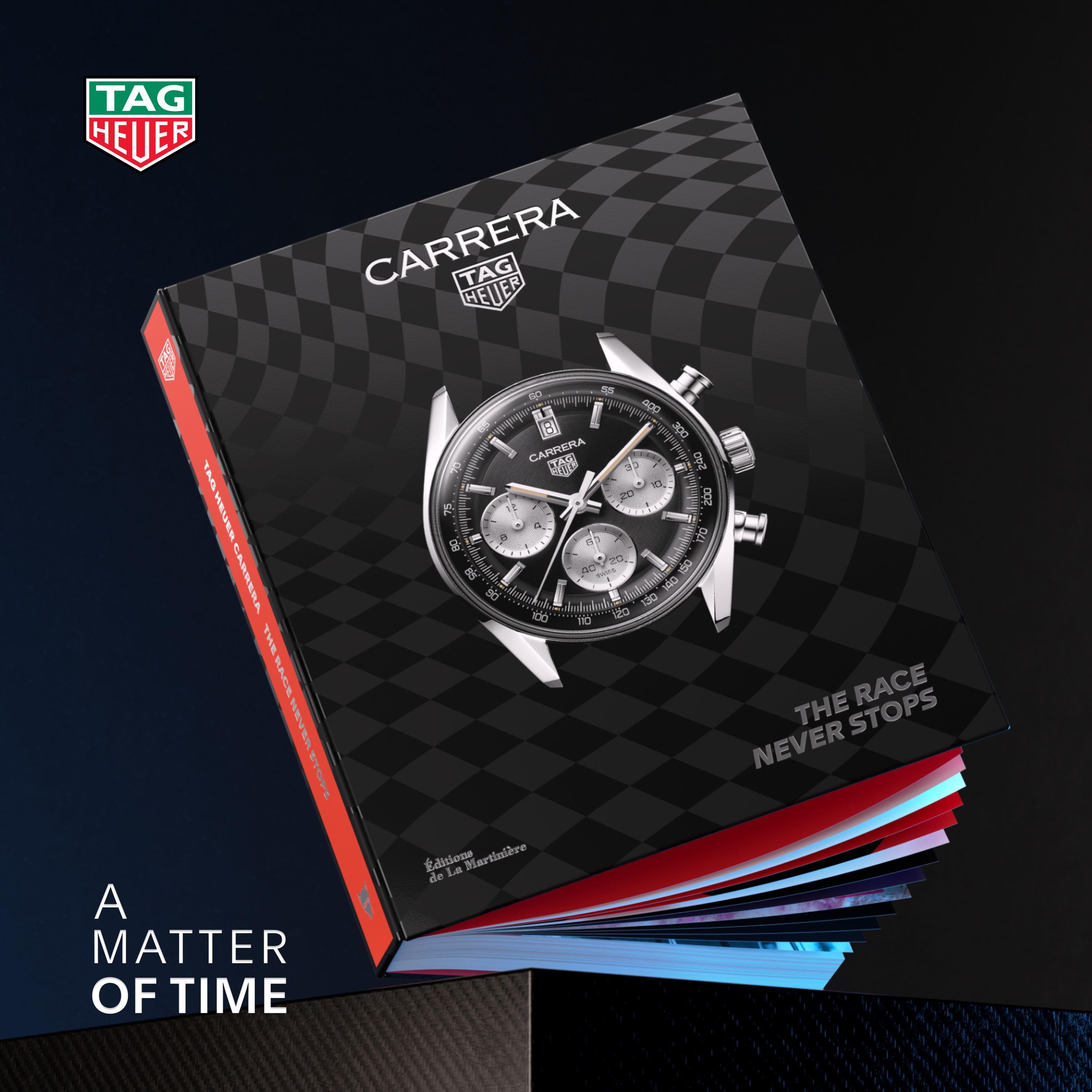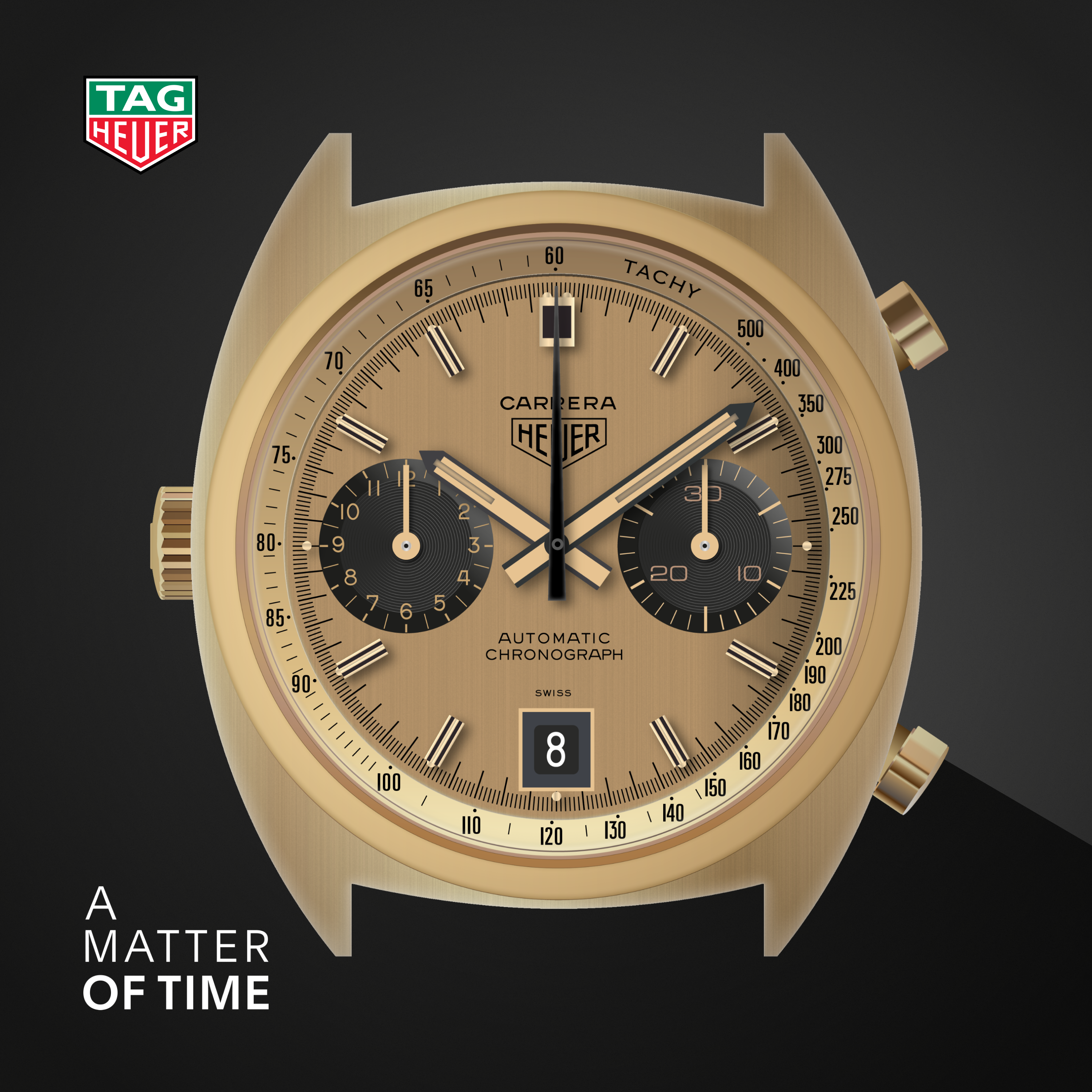Episode Transcript
Speaker 1 00:00:01 Welcome to a Matter of Time, a podcast by Tag Hore. I'm your host, Nicholas Bbe, heritage Director at Tag Hore, and a great fan of fine Swiss watchmaking. In this series, we are discussing the iconic Carrera, and with every episode we are digging deeper and deeper into the history of the model. We've already spoken about the beginnings of the name with the Carrera Pan Americana, this iconic road race that took place in Mexico in the early 1950s. Before moving on to the very first of the Carrera model lines, the reference 2 4 47 introduced in 1963. Today we're gonna be focused on the first complication that arrived in the Carrera line. How did you convince a client to buy a manual wind chronograph? Of course, many people had timing needs and it was in a utility in their daily lives, but for others, you needed something extra. Hoyer solution to this problem was to add a date complication to its chronograph models. This would result in the reference 3 1 47 Carrera launched in 1965. The watch was a really new innovation for the industry, and for that we needed pioneering communication. Jack Hoyer, having set up the office in Manhattan in the late 1950s, was well aware of what the landscape looked like when it came to the Mad Men of Madison Avenue and their new approach to advertising and communications.
Speaker 1 00:01:24 He worked with one of the great creative agencies of the era, re capello and Calwell to create a series of iconic advertisements with a sense of whimsy to them showing a Hoya stopwatch, a Hoya chronograph, and a traditional desk calendar on the top portion of the page, and showing the brand new Carrera date on the lower half. The adverts proudly proclaimed that Hoya had amazingly managed to combine these three great technological innovations into one product.
Speaker 1 00:01:57 The curious thing about these early watches, which were offered with either a silver dial or a black dah, was that the date window was positioned at 12 o'clock whilst preserving the symmetry of the piece. What it meant was, was that when the chronograph hand was reset, it partially covered the aperture and made it slightly difficult to read. It's funny to think that a product had made its all the way to the market before this realization emerged, but it was quickly fixed in the following year by moving the date window to nine o'clock, creating this very interesting asymmetric design. It retained the 45 minute recorder at three o'clock and was powered by the lander on, uh, caliber 180 9, but created an aesthetic that was very different from a traditional Hoyer Carrera with quite a lot of space on the dial, particularly on the lower portion. It was ripe for adding second logos, and this would really reinforce Hoya's connection to the world of motor racing. On these early Deto Carreras, we had a very interesting combination of logos. The first is the cougar name. It inspires a bit of a, a laugh from some collectors, but it was the famed, uh, sports car racing division, uh, within Ford, uh, that was seeing great success on the track at the time, as well as the Indianapolis Motor Speedway, an organization which Hoyer had forged an incredible relationship with, thanks to their application of timing equipment and would continue to do so throughout the 1960s and 1970s.
Speaker 1 00:03:32 On the second series of reference 347 s, we would see Carol Shelby's Racing Team's logo on the lower portion, and it was clearly something that was greatly prized by team members. Another curiosity from this series is that we would see pieces specifically issued to the Jordian Air Force, and this would echo Hoya's deep connection to the military, whether it be the Bundu VA for which they'd been producing watches since the early 1960s or other forces around the world. It became clear that Hoya Cro grass were indispensable for people in high demand environments
Speaker 1 00:04:05 For these logo dolls. It's really interest to explore how they were created on the earlier references, 36 47, the two registered version of the reference 24 47 that had been seen at the debut of the Carrara with the lowest subsidiary Dow removed it opened up this fantastic canvas to allow others to apply their names to the Dows. It seems that our US distribution company had formed a partnership with a supplier in Lancaster, Pennsylvania that was able to apply multicolored logos to the Dow. We famously saw models for MG that were given to their sales team, Sunray dx, which was a well-known oil company that sponsored motor racing and Shamrock Oil and Gas that produced this wonderful dow. With this vivid green, uh, clover leaf, uh, applied to the Dow Pat's most famous. These was the watch made for James Garner, but all of these were two registered chronographs.
Speaker 1 00:04:59 It was with the reference 3 1 47 that we seem to see more quantities of these double sign Dows, so it appeared that the idea was quite popular, particularly with racing teams. It's incredible to think in 1965 that a chronograph with a date complication was such a great novelty that it helped with sales of the manual wine Carrera watches. Of course, today, nearly every chronograph available in the marketplace has a date window somewhere on the Dow, and it goes to show that from these little seeds that were planted by Hoyer in the 1960s, it's now become a fundamental part of the watch industry today. This includes a huge number of tag ho chronographs today, particularly in the Carrera collection, and we've got a lot of exciting things to look forward to in the 60th anniversary of this model line. I hope you've enjoyed today's episode of the Matter of Time. It's been a pleasure to share some of these wonderful stories with you, and I'm looking forward to welcome you on the next episode, telling more stories about the Carrera with so many amazing pieces of history to share around Tag Hoyer. It's only a matter of time before we get round to them.


